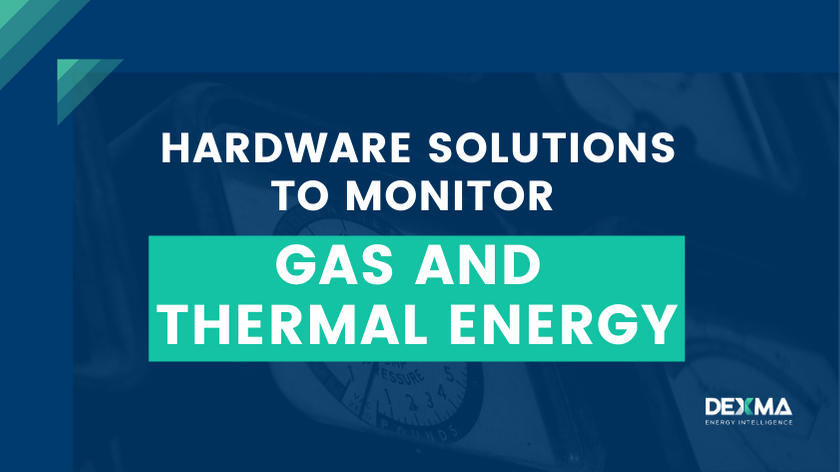Why Monitor Gas and Thermal Energy?
Hang on, are you telling me you are an energy manager that’s only worried about electricity!? Let’s take a step back and realise that gas represents nearly 40% of the total energy consumed in the industrial and service sectors in Europe. That’s almost half, you guys!
And it’s no wonder – we need gas for heating, but also cooking and countless industrial processes. Plus, gas is 60% cheaper than electricity in the majority of European countries (except Sweden, where district heating is the main game in town).
Indeed, for many of our partners, gas represents their biggest source of energy (in kWh). For that reason, it get expensive not to pay attention to consumption levels, as they risk making the largest contributions to emissions targets. We want to make sure we are meeting regulatory targets and avoiding penalties, right?
For us geeks though, the most exciting thing about gas and thermal energy is that they are relatively unexplored sources in terms of energy efficiency technology. New and emerging technologies – such as gas for cooling – can generate big savings opportunities. And we are always at the ready to help our clients and partners capture those!
How to Generate Savings From Gas & Thermal
The first step to achieving meaningful energy and cost savings for gas and thermal power is to figure out your hardware situation.
Do you already have meters set up? Do you need to start from scratch when it comes to metering? How far apart are your locations?
We have a few sample metering configurations to give you an idea of setup time, and hardware costs.
For a more detailed explanation of each configuration, we recommend that you check out the full webinar recording, where our Product Director Daniel Utges gives the full rundown on each type of hardware configuration for gas and thermal metering. It’s just 45 minutes long and can be accessed for free below:
Gas Monitoring – Sample Hardware Configuration
Let’s start with gas monitoring – we’ll look at both wired and wireless configurations, plus a hybrid version in case you have a more complex setup at your facility.
Basically what we are measuring are pulses, using a special device called a pulse counter. The counter sends that information to your gateway device, which then sends it to your energy management software system for analysis. You’ll notice that an ATEX barrier device is absolutely necessary here to protect the meter room from explosions! Also note that some pulse counters and gateways need their own power supply.
Gas Monitoring – Sample Wired Hardware Configuration
The example wired configuration laid out here would require around 2 hours of installation time, and run you approximately €850 in hardware costs.
The benefits of a wired configuration include real time data capture, which is always ideal for a more holistic energy analysis later on. However, the pulse counter and gateway here would each require their own power supply.
Gas Monitoring – Sample Hybrid Configuration
This is a hybrid configuration for gas metering, which means it combines wired and wireless meter devices. This type of installation would require about 4 hours of setup time, and run you approximately €850 in hardware costs. The advantage here is that in addition to capturing data in real time, the pulse counter and gateway can be self-powered (by batteries) and installed in separate boxes, which helps if space is a constraint in your facility.
Gas Monitoring – Wireless Configuration
In this configuration, there’s just one simple step! The all-in-one counter + gateway setup only requires 90 minutes to install, and comes in at around €400 EUR for the hardware. The advantage here is obviously convenience, but keep in mind the tradeoff that data capture happens a bit more slowly. Instead of every 15 minutes, data is captured hourly and sent to your energy management platform next day.
Thermal Monitoring – Overview
With thermal monitoring, the situation gets a bit more tricky as meters are much more difficult to install. The setup procedure is often intrusive, which means systems need to be paused or taken offline temporarily during the meter installation process. Further, depending on the size of the pipes to be metered, the devices can be quite costly and gateways always require their own power sources.
Thermal Monitoring – Sample hardware configuration
Installation time required in terms of setup and configuration for a thermal meter in a mid-size facility, would be approximately 5 hours or more, depending on the type of system. For a mid-range meter the cost is approximately €1500.
There you have it! We hope you’ve got a better idea of your hardware needs should you be interested in setting up a metering configuration for your gas and thermal energy sources.
If you’re still confused about the wide world of hardware for energy management, never fear – we have a full learning bundle that will take you from basics to specifics for all your hardware needs. This package of learning materials is free and can be accessed below:




